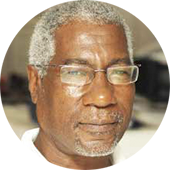
TOMORROW September 27 is observed in United Nations member-states as World Tourism Day and there can be no better time to look at where tourism has come from, is at present and heading for the future.
Yesterday, today and tomorrow spell different tourism stories for different islands.
Yesterday (before COVID-19), Saint Lucia’s annual visitor figures were reported in the millions and hundreds of thousands, as hotels overflowed and cruise ships crowded Port Castries.
Today, tourism provided 65% of the island’s GDP, is its main source of foreign exchange and provider of 48% of all jobs – but with no visitors to sustain these healthy figurers.
So, what for tomorrow?
With COVID-19 deaths approaching one million worldwide and the USA close to the 250,000 unbelievably predicted back in March, the pandemic will be with us for at least another year and a working and affordable vaccine not expected until 2021.
The world is opening-up bit by bit, as people get tired of lockdowns. But where they consider safe to travel and easily enter is the tricky question.
Countries that can afford to close their borders for as long as COVID demands, like Britain, which is re-entering lockdown for the next six months.
But what about small-island, fragile-economy destinations like the Caribbean, African and Pacific that simply cannot afford to remain in lockdown mode?
The first big question is whether tourism will remain the same post-COVID; and if not — as is the case – the next big question is: What do we do next?
It’s clear that tourism will not return soon to what it used to be, if ever.
The industry always depends on new ideas to survive and one that’s not new is getting Caribbean people to discover and rediscover our islands and ourselves, our cultures, our shared values and the rich multiplicity of our natural habitats, plants and animals.
Just name it, we have it all in this region – and more.
Which is why The Caribbean is the hottest international destination for millions worldwide who (used to) flock to its shores and hotel rooms every year, turning tourism from a seasonal affair to a year-round one for popular destinations.
As with its food import bill, the Caribbean depends almost exclusively on marketing itself to visitors from European, American and other faraway markets.
But if the region’s tourism market is that good for visitors from across the world, it is just as good and even better for Caribbean people.
Which is why the ‘Staycation’ idea was born in Saint Lucia: to encourage ‘Lucians’ to holiday at home – and pay less than the visitor.
Caribbean people do want to know their region better.
Guyanese naturally would want to bathe in Saint Lucia’s Sulphur Springs and island-hop to more destinations for a better mix of experiences than the usual annual holiday trip to New York or Toronto; and Caribbean islanders would relish a visit to continental Guyana’s Keieteur Falls, or a boat ride through the Essequibo Islands.
CARICOM citizens can visit Tobago (and then Trinidad), Carriacou (and then Grenada); then fly or sail through the Grenadines and visit the Botanical Gardens in Kingstown, St. Vincent, home to the first breadfruit tree in the Caribbean; next they can climb the Gros Piton in Saint Lucia, witness the miraculous rebuilding of Resilient Dominica and sample the sweetness of Antigua and St Kitts; or fly to Barbados and visit Rihanna’s childhood home — and all that can also include visits to Martinique, Guadeloupe and even Cayenne.
This is not a dream, it has happened.
Once upon a time in the 1970s, LIAT offered a round-trip to 23 islands for EC $365, within the time limit of 14 0r 30 days; and a flight from Castries to Vieux Fort on the Inter-island Air Services (IAS) cost EC $17.
Today, however, it can cost more to fly to Dominica than to Miami and it’s generally cheaper to fly to the USA than some Caribbean destinations; you still have to fly to the USA to get to The Bahamas, Belize or Haiti; and we still must (pay to) fly to Miami for an affordable cruise (that might even include a call at our home port).
It would seem to me that now that we are weeping and wailing and moaning and gnashing our teeth about visitors not coming like before, this is also the right time for the Caribbean to start selling itself, in a more real way, to its people.
Stuck between here and nowhere, when traditional visitors we are depending on are picking-and-choosing and simply waiting for the best offers to start flowing after COVID protocols are lifted, what do we do?
Do we simply wait for the faithful but aging returning visitor to return again, or do our governments start to smell the coffee and really start brewing new ideas make intra-regional travel more tasty — and simply affordable.
The creativity and innovation levels that brought the region’s tourism industry to where it’s at today is more in demand now than ever, to create new ways to solve the old problem of making travel through the region cheaper and more affordable for Caribbean people.
After all, why should 65% of airline tickets be taxes? And why must Caribbean people have to pay the same US $75 travel tax as visitors? Why do Caribbean travelers still have to demand ‘Hassle Free’ travel through some Caribbean ports?
And why should LIAT have to be forced to land, grounded and forced to bite the dust after 60 years flying high, because of stiff competition from young and old vultures preying on the same rotting corpse?
Don’t wait till tomorrow, start thinking (and worrying) today about how Caribbean tourism and the region’s economies will survive, not only on World Tourism Day 2020, but for every day thereafter that COVID-19 keeps the industry under lockdown and economies in a global vice grip.












